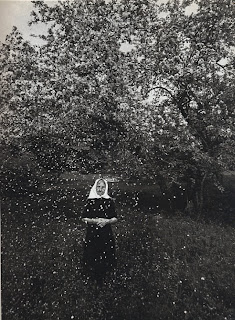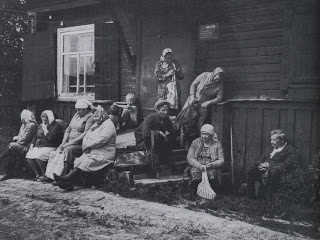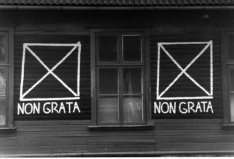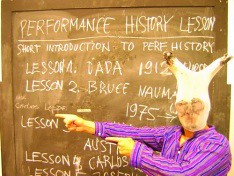The following photos are images that resonated with me from an issue of Aperture, issue #168, published in 1989 called Photostroika: New Soviet Photography. The photographers are from different parts of what are now former Soviet republics. The only one I know for sure is Estonian is Herkii-Erich Merila, who was born in Tallinn in 1964 and has a great website with an unusual yet pleasing (!) aesthetic
here, which I hope to investigate further in the future.
In order as they appear:
Three images from the “Blossoming” Series, 1976-1985, Romualdas Rakauskas; Communal Tango, 1988, Herkki-Erich Merila;
From “Gypsy Life” Series, 1976-1988, Lyalya Kuznetsova; From “Country Celebrations – Pilgrims,” 1980-89, Romualdas Pozerskis; "Hill," 1986, Vyacheslev Koleichuk; "Love in the Kitchen," 1988, Roman Pyatkov; "Open the Window I’m Leaving (1 & 2)", 1988, Roman Pyatkov; "Tomorrow They’ll Even Fill It With Water", 1988, Kalju Suur; "The Slogan," 1987, Vladimir Zotov; From the “Town” series, 1981-1985, Boris Sadalev.















From an essay that appeared in the magazine, "Many Nations, Many Voices" by Daniela Mrazkova (pg. 24).
“Since the 1950s, the Baltic Nations have rebounded from Stalinist oppression to revive their culture. Taking pride in their own national traditions, many people in these republics are now clamoring for their right to self-determination.”
“The largely pastoral images produced by Baltic photographers have served as a corrective to the picture of life that has long been disseminated in official propoganda through the U.S.S.R. Photographs of traditional Baltic folk customs, or of country life and pastimes, contrast in their simple humanness with the seemingly endless numbers of photographs of heroic ballet-dancers, athletes, collective farmers, workers, cosmonauts, and soldiers that have long dominated official imagery.”




































